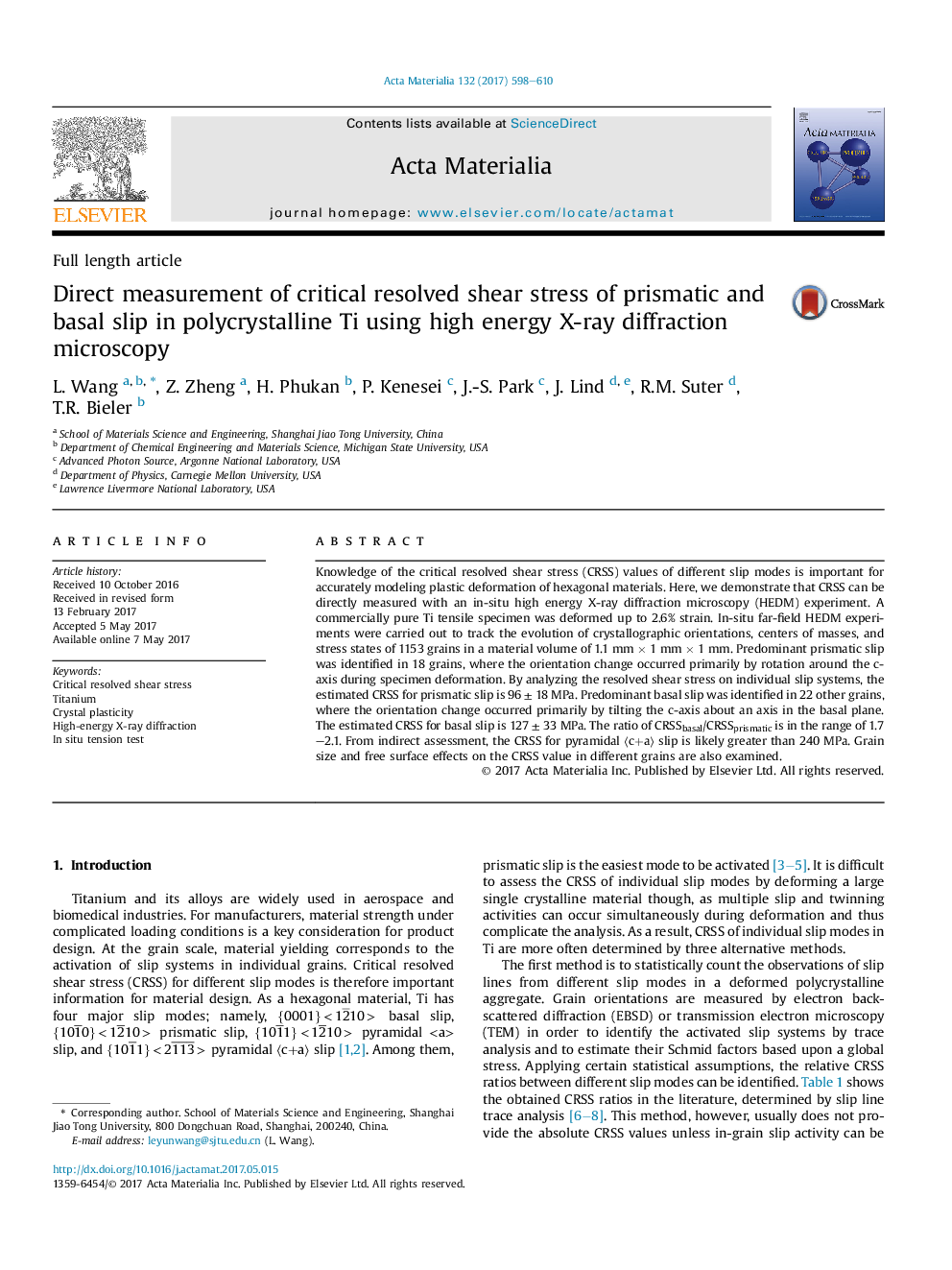| کد مقاله | کد نشریه | سال انتشار | مقاله انگلیسی | نسخه تمام متن |
|---|---|---|---|---|
| 5436192 | 1509544 | 2017 | 13 صفحه PDF | دانلود رایگان |

Knowledge of the critical resolved shear stress (CRSS) values of different slip modes is important for accurately modeling plastic deformation of hexagonal materials. Here, we demonstrate that CRSS can be directly measured with an in-situ high energy X-ray diffraction microscopy (HEDM) experiment. A commercially pure Ti tensile specimen was deformed up to 2.6% strain. In-situ far-field HEDM experiments were carried out to track the evolution of crystallographic orientations, centers of masses, and stress states of 1153 grains in a material volume of 1.1 mm × 1 mm × 1 mm. Predominant prismatic slip was identified in 18 grains, where the orientation change occurred primarily by rotation around the c-axis during specimen deformation. By analyzing the resolved shear stress on individual slip systems, the estimated CRSS for prismatic slip is 96 ± 18 MPa. Predominant basal slip was identified in 22 other grains, where the orientation change occurred primarily by tilting the c-axis about an axis in the basal plane. The estimated CRSS for basal slip is 127 ± 33 MPa. The ratio of CRSSbasal/CRSSprismatic is in the range of 1.7–2.1. From indirect assessment, the CRSS for pyramidal 〈c+a〉 slip is likely greater than 240 MPa. Grain size and free surface effects on the CRSS value in different grains are also examined.
Figure optionsDownload high-quality image (212 K)Download as PowerPoint slide
Journal: Acta Materialia - Volume 132, 15 June 2017, Pages 598–610